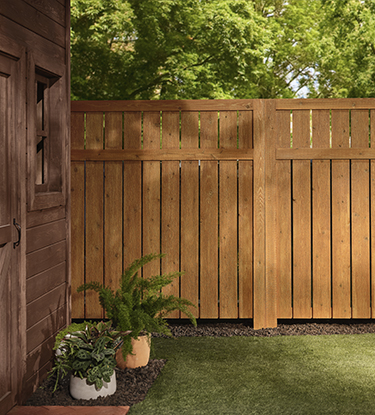Exactly How to Achieve Professional Results With Deck Discoloration
The process of changing an aging deck right into a revitalized outside area demands much more than just a layer of stain; it demands a systematic approach and focus to information. From selecting the ideal discolor for your deck's wood kind to mastering the application method, each step plays a critical role in the final result.
Picking the Right Stain
Picking the proper stain for your deck is an important decision that significantly influences the total look and longevity of the coating. When choosing a tarnish for your deck, it is vital to consider both the visual choices and the sensible facets of the item. The very first factor to consider is whether you prefer a clear, semi-transparent, or solid color stain. Transparent spots enable the natural charm of the timber to show through however supply less UV defense. Semi-transparent discolorations offer a concession between color and timber grain exposure while offering modest UV security. Strong shade stains, on the other hand, supply the a lot of UV defense and use a variety of shade choices but will entirely hide the wood grain.

Furthermore, consider the kind of wood your deck is made of, as various stains are developed to work best with particular wood types. Comprehending the level of maintenance you agree to devote to is likewise crucial, as some stains might need more regular reapplication than others. By thoroughly considering these aspects, you can choose a discolor that not just enhances the appearance of your deck but likewise secures it for years to find.
Preparing the Deck Surface Area
When considering deck staining, the preliminary step towards attaining expert outcomes includes extensively preparing the deck surface. Correctly preparing the deck surface is crucial as it makes certain that the tarnish sticks well and provides resilient defense to the wood.
Sanding the deck surface area is additionally necessary to smooth out any type of harsh locations and open up the timber pores for much better stain infiltration. Make use of a medium-grit sandpaper to sand the deck in the instructions of the timber grain.
Lastly, safeguard any type of neighboring plants, furniture, or surface areas from prospective damages by covering them with plastic bed linen or ground cloth. Taking the time to thoroughly prepare the deck surface establishes the foundation for an effective discoloration task and makes certain discover this professional-looking outcomes.
Using the Stain
To accomplish an expert surface when discoloring a deck, meticulous application of the stain is crucial. Apply the stain evenly, adhering to the timber's grain to improve the deck's natural elegance. By using the discolor diligently, you'll achieve a professional-looking finish that improves both the look and longevity of your deck.
Guaranteeing Correct Drying Out Time
Making sure sufficient drying out time post-staining is crucial go to these guys to the general success of the deck task, as it enables the discolor to appropriately establish and bond with the wood surface. Hurrying this phase can lead to a range of problems, consisting of uneven coloring, poor bond, and a much shorter life expectancy for the coating. The drying time required can vary based upon aspects such as the kind of discolor made use of, weather, and the porosity of the wood. As a general standard, many deck stains will certainly need at the very least 24-48 hours to dry completely.
During this drying out period, it is important to keep the deck surface area without any type of foot traffic, furniture, or other things that may disturb the finish. In addition, it is critical to prevent exposure to dampness, such as rain or dew, which can jeopardize the drying out process. Effectively dried discolor will certainly feel completely dry to the touch and will certainly not leave any deposit on your fingers when lightly massaged. Putting in the time to make certain extensive drying out will certainly add dramatically to the longevity and appearance of your tarnished deck.
Preserving Your Discolored Deck
Correct upkeep additional info of a tarnished deck is vital for preserving the honesty and look of the coating attained through thorough drying - deck staining near me. To keep your stained deck effectively, normal cleaning is necessary. Brush up away debris and dust consistently to protect against discoloration and mold development. Take into consideration making use of a mild cleaning agent mixed with water to scrub the surface area and remove any built-up grime. It is a good idea to cleanse your deck at the very least twice a year, ideally in the springtime and loss, to maintain it looking fresh and dynamic.

Final Thought
In conclusion, achieving professional outcomes with deck discoloration involves picking the suitable tarnish, properly preparing the deck surface area, applying the tarnish uniformly and constantly, permitting enough drying time, and preserving the discolored deck consistently. By following these actions very carefully and diligently, you can make certain a perfectly discolored deck that improves the look and longevity of your outside room.

Correct upkeep of a discolored deck is vital for maintaining the stability and appearance of the surface attained via extensive drying out.